Fire Resistance and Seismic Performance Study of a High-Strength Construction Steel Using Creep and Internal Friction Analysis
Abstract
:1. Introduction
2. Materials and Methods
2.1. Test Steel
2.2. Microstructural Characterizations
2.3. Creep Test
2.4. Internal Friction Test
3. Results and Discussion
3.1. Tensile Properties
3.2. Evaluation of the Fire Resistance Utilizing Creep Test
3.3. Effect of Alternating Temperature on the Creep Behavior
3.4. Seismic Performance Characterized by the Internal Friction Analysis
4. Conclusions
Author Contributions
Funding
Institutional Review Board Statement
Informed Consent Statement
Data Availability Statement
Conflicts of Interest
References
- Xiong, M.-X.; Liew, J.Y.R. Experimental study to differentiate mechanical behaviours of TMCP and QT high strength steel at elevated temperatures. Constr. Build. Mater. 2020, 242, 118105. [Google Scholar] [CrossRef]
- Kumar, W.; Sharma, U.K.; Shome, M. Mechanical properties of conventional structural steel and fire-resistant steel at elevated temperatures. J. Constr. Steel Res. 2021, 181, 106615. [Google Scholar] [CrossRef]
- Li, G.-Q.; Wang, X.-X.; Zhang, C.; Cai, W.-Y. Creep behavior and model of high-strength steels over 500 MPa at elevated temperatures. J. Constr. Steel Res. 2020, 168, 105989. [Google Scholar] [CrossRef]
- Meißner, T.M.; Montero, X.; Fähsing, D.; Galetz, M.C. Cr diffusion coatings on a ferritic-martensitic steel for corrosion protection in KCl-rich biomass co-firing environments. Corros. Sci. 2020, 164, 108343. [Google Scholar] [CrossRef]
- Market for Fire-Resistant Coatings to Reach $1106 Million by 2025. Focus Powder Coat. 2021, 2021, 7. [CrossRef]
- Wan, R.; Sun, F.; Zhang, L.; Shan, A. Effects of Mo on high-temperature strength of fire-resistant steel. Mater. Des. 2012, 35, 335–341. [Google Scholar] [CrossRef]
- Jo, H.-H.; Shin, C.; Moon, J.; Jang, J.H.; Ha, H.-Y.; Park, S.-J.; Lee, T.-H.; Lee, B.H.; Chung, J.-H.; Speer, J.G.; et al. Mechanisms for improving tensile properties at elevated temperature in fire-resistant steel with Mo and Nb. Mater. Des. 2020, 194, 108882. [Google Scholar] [CrossRef]
- Huo, X.; Xia, J.; Li, L.; Peng, Z.; Chen, S.; Peng, C.-T. A review of research and development on titanium microalloyed high strength steels. Mater. Res. Express 2018, 5, 062002. [Google Scholar] [CrossRef]
- Xie, Z.; Song, Z.; Chen, K.; Jiang, M.; Tao, Y.; Wang, X.; Shang, C. Study of Nanometer-Sized Precipitation and Properties of Fire Resistant Hot-Rolled Steel. Metals 2019, 9, 1230. [Google Scholar] [CrossRef] [Green Version]
- Sha, W. The Behaviour of Structural Steels at Elevated Temperatures and the Design of Fire Resistant Steels. Mater. Trans. 2001, 42, 1913–1927. [Google Scholar] [CrossRef] [Green Version]
- Chijiiwa, R.; Yoshida, Y.; Uemori, R.; Tamehiro, H.; Funato, K.; Horii, Y. Development and Practical Application of Fire-Resistant Steel for Buildings; Nippon Steel Corporation: Tokyo, Japan, 1993; pp. 47–55. [Google Scholar]
- Zhang, Z.-y.; Yong, Q.-l.; Sun, X.-j.; Li, Z.-d.; Kang, J.-y.; Wang, G.-d. Microstructure and Mechanical Properties of Precipitation Strengthened Fire Resistant Steel Containing High Nb and Low Mo. J. Iron Steel Res. Int. 2015, 22, 337–343. [Google Scholar] [CrossRef]
- Shi, Y.; Tu, C.; Wu, Y.; Liu, D.; Meng, L.; Ban, H. Numerical investigations of fire-resistant steel welded I-section columns under elevated temperatures. J. Constr. Steel Res. 2021, 177, 106464. [Google Scholar] [CrossRef]
- Zhang, S.; Shen, J.; Kang, H.; Hu, F. Study on creep behavior and microstructure of a Fe–Cr–Al–Nb–W ferrtic heat-resistant steel based on C, N and Al element control. Mater. Res. Express 2020, 7, 056524. [Google Scholar] [CrossRef]
- Wang, J.; Fa, Y.; Tian, Y.; Yu, X. A machine-learning approach to predict creep properties of Cr–Mo steel with time-temperature parameters. J. Mater. Res. Technol. 2021, 13, 635–650. [Google Scholar] [CrossRef]
- Torić, N.; Boko, I.; Divić, V.; Burgess, I.W. Behaviour of Steel Grade S275JR Columns under the Influence of High-Temperature Creep. Metals 2018, 8, 874. [Google Scholar] [CrossRef] [Green Version]
- Chen, Y.; Li, Y.; Zhou, X.; Tan, F.; Jiang, Y. Effects of cryogenic treatment on mechanical properties and crystal orientation of 0.25C-0.80Si-1.6Mn steel with extraordinary strength-toughness. Mater. Res. Express 2021, 8, 036517. [Google Scholar] [CrossRef]
- Wang, M.; Fahnestock, L.A.; Qian, F.; Yang, W. Experimental cyclic behavior and constitutive modeling of low yield point steels. Constr. Build. Mater. 2017, 131, 696–712. [Google Scholar] [CrossRef]
- Nowick, A.S. Internal friction in metals. Prog. Met. Phys. 1953, 4, 1–70. [Google Scholar] [CrossRef]
- Lai, H.-H.; Cheng, H.-C.; Su, S.-H.; Lin, C.-M.; Wu, W. Evolution of internal friction in low-carbon steel during vibratory stress relief. J. Mater. Res. Technol. 2020, 9, 5403–5409. [Google Scholar] [CrossRef]
- Dere, E.G.; Sharma, H.; Petrov, R.H.; Sietsma, J.; Offerman, S.E. Effect of niobium and grain boundary density on the fire resistance of Fe–C–Mn steel. Scr. Mater. 2013, 68, 651–654. [Google Scholar] [CrossRef]
- Wang, W.Y.; Liu, B.; Kodur, V. Effect of Temperature on Strength and Elastic Modulus of High-Strength Steel. J. Mater. Civ. Eng. 2013, 25, 174–182. [Google Scholar] [CrossRef]
- Wang, X.; Li, Z.; Zhou, S.; Wang, W.; Yong, Q.; Yang, Z.; Shen, J.; Shang, C.; Liu, Q. Precipitation behavior of Ti–Nb–V–Mo quaternary microalloyed high strength fire-resistant steel and its influence on mechanical properties. Mater. Sci. Eng. A 2021, 807, 140865. [Google Scholar] [CrossRef]
- Xiao, B.; Xu, L.; Zhao, L.; Jing, H.; Han, Y.; Song, K. Transient creep behavior of a novel tempered martensite ferritic steel G115. Mater. Sci. Eng. A 2018, 716, 284–295. [Google Scholar] [CrossRef]
- Choi, I.-C.; Yoo, B.-G.; Kim, Y.-J.; Jang, J.-I. Indentation creep revisited. J. Mater. Res. 2012, 27, 3–11. [Google Scholar] [CrossRef]
- Lee, D.-H.; Seok, M.-Y.; Zhao, Y.; Choi, I.-C.; He, J.; Lu, Z.; Suh, J.-Y.; Ramamurty, U.; Kawasaki, M.; Langdon, T.G.; et al. Spherical nanoindentation creep behavior of nanocrystalline and coarse-grained CoCrFeMnNi high-entropy alloys. Acta Mater. 2016, 109, 314–322. [Google Scholar] [CrossRef] [Green Version]
- Norton, B. The Creep of Steel at High Temperatures; McGraw Hill: London, UK, 1929. [Google Scholar]
- Yavari, P.; Langdon, T.G. An examination of the breakdown in creep by viscous glide in solid solution alloys at high stress levels. Acta Metall. 1982, 30, 2181–2196. [Google Scholar] [CrossRef]
- Monkman, F.C.; Grant, N.J. An empirical relationship between rupture life and minimum creep rate in creep-rupture tests. Proc. ASTM 1956, 56, 593–615. [Google Scholar]
- Zhang, Y.; Liu, J.P.; Chen, S.Y.; Xie, X.; Liaw, P.K.; Dahmen, K.A.; Qiao, J.W.; Wang, Y.L. Serration and noise behaviors in materials. Prog. Mater. Sci. 2017, 90, 358–460. [Google Scholar] [CrossRef]
- Li, X.; Holdsworth, S.R.; Mazza, E.; Hosseini, E. Creep behaviour of a high chromium martensitic steel under stress varying creep loading conditions: Primary creep regeneration (PCR). Int. J. Press. Vessel. Pip. 2020, 187, 104188. [Google Scholar] [CrossRef]
- Li, X.; Holdsworth, S.R.; Mazza, E.; Hosseini, E. Comparison of primary creep regeneration and anelastic recovery behaviour of 316H austenitic and 10%Cr martensitic steels. Mech. Mater. 2020, 148, 103474. [Google Scholar] [CrossRef]
- Li, W.; Xie, D.; Li, D.; Zhang, Y.; Gao, Y.; Liaw, P.K. Mechanical behavior of high-entropy alloys. Prog. Mater. Sci. 2021, 100777. [Google Scholar] [CrossRef]
- Li, W.; Cai, M.; Wang, D.; Zhang, J.; Zhao, S.; Shao, P. Studying on tempering transformation and internal friction for low carbon bainitic steel. Mater. Sci. Eng. A 2017, 679, 410–416. [Google Scholar] [CrossRef]
- Wang, W.; Zhou, B. The correlation of damping capacity with grain-boundary precipitates in Fe–Cr-based damping alloys annealed at high temperature. Mater. Sci. Eng. A 2004, 366, 45–49. [Google Scholar] [CrossRef]
- Choi, W.S.; Lee, J.; De Cooman, B.C. Internal-friction analysis of dislocation–interstitial carbon interactions in press-hardened 22MnB5 steel. Mater. Sci. Eng. A 2015, 639, 439–447. [Google Scholar] [CrossRef]
- Lan, L.; Yu, M.; Qiu, C. On the local mechanical properties of isothermally transformed bainite in low carbon steel. Mater. Sci. Eng. A 2019, 742, 442–450. [Google Scholar] [CrossRef]
- ANSI/AISC SSPEC-2005 Seismic Provisions for Structural Steel. Available online: //www.aisc.org/globalassets/aisc/publications/standards/seismic-provisions-for-structural-steel-buildings-ansi-aisc-341-16.pdf (accessed on 12 May 2021).
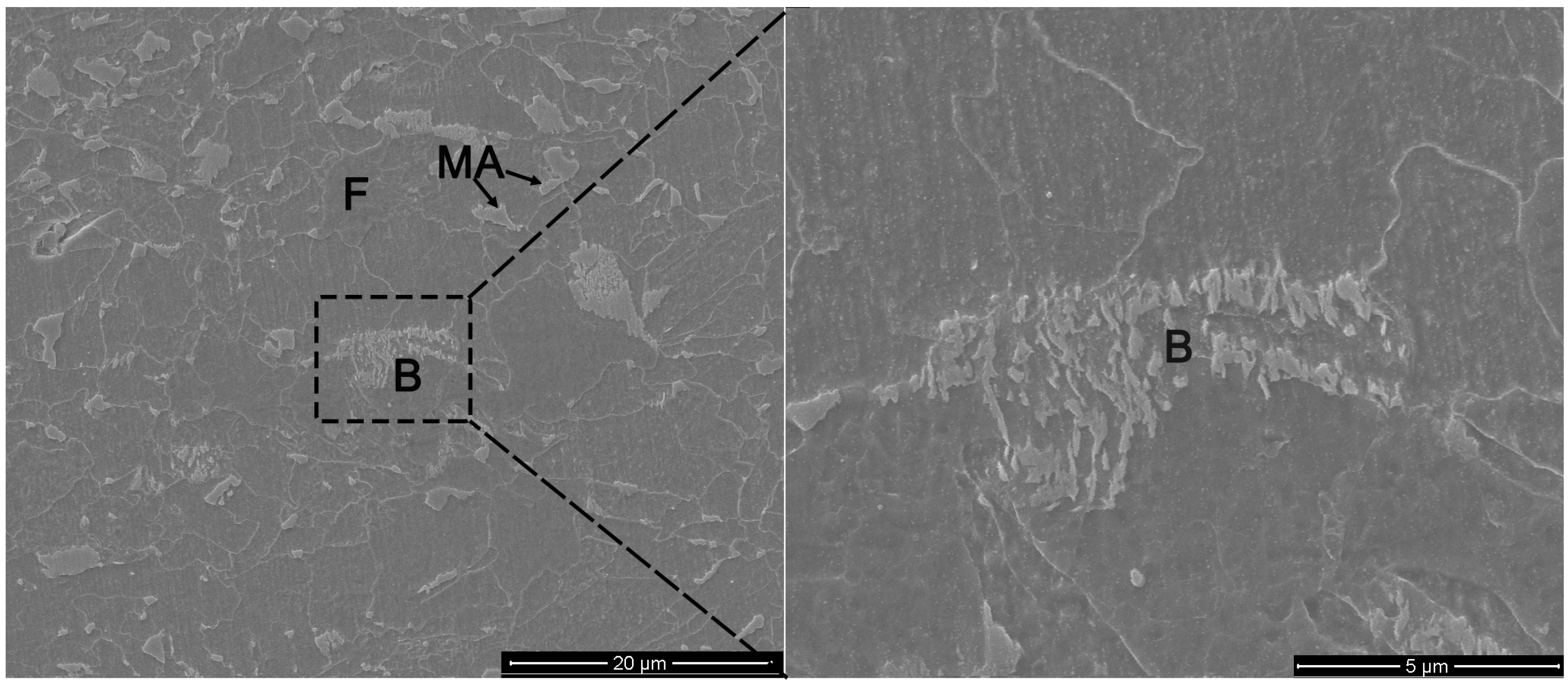

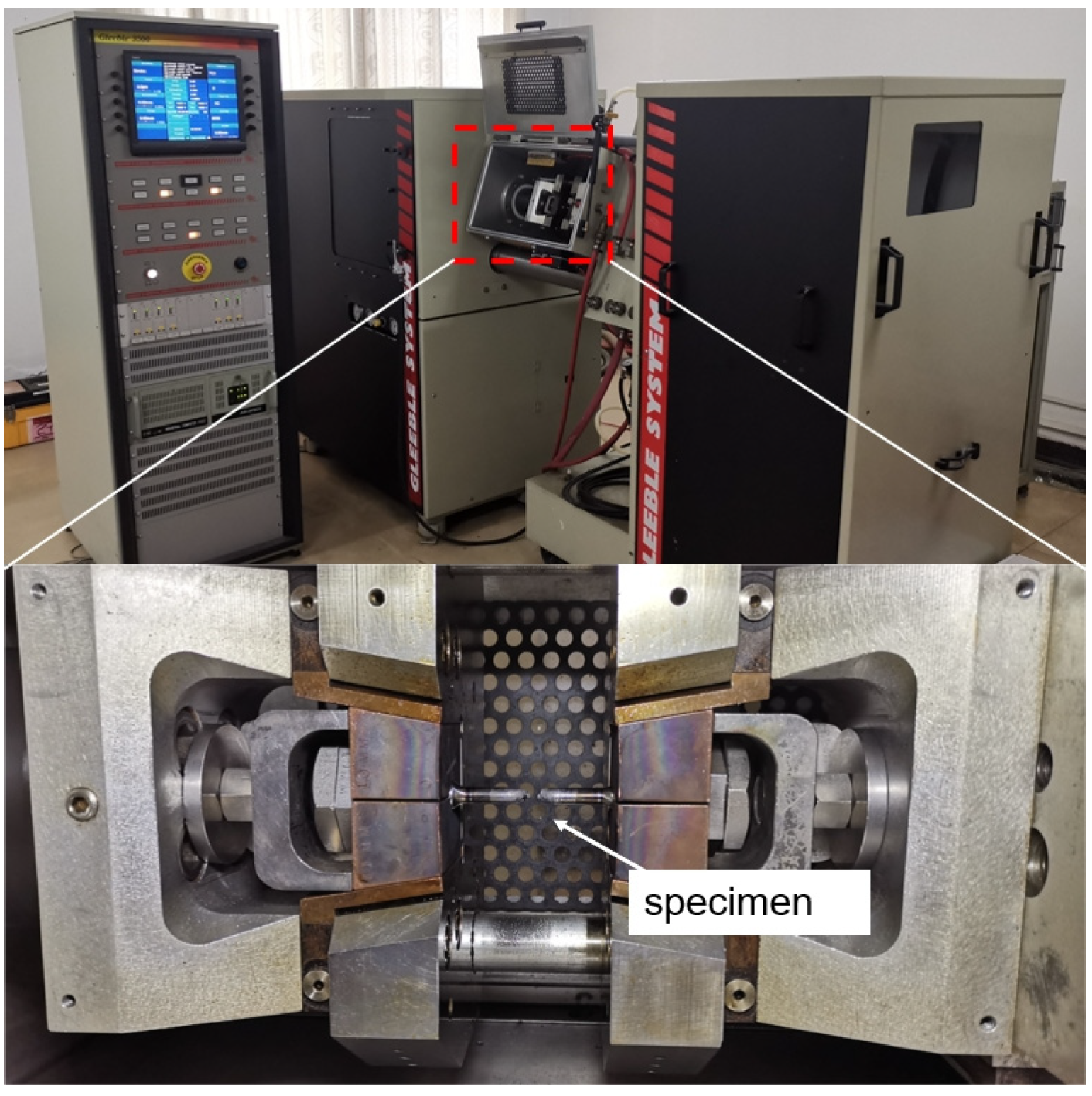
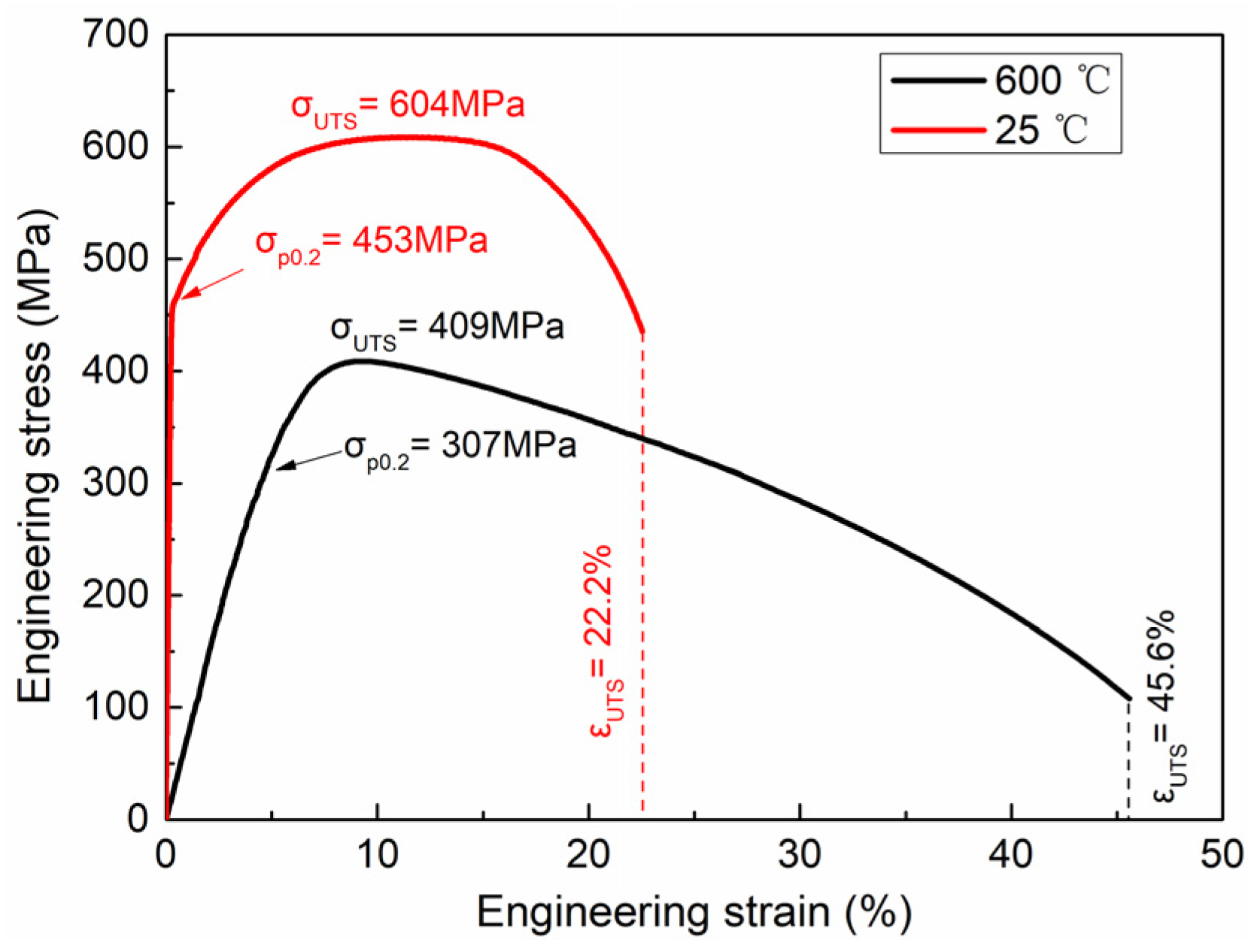
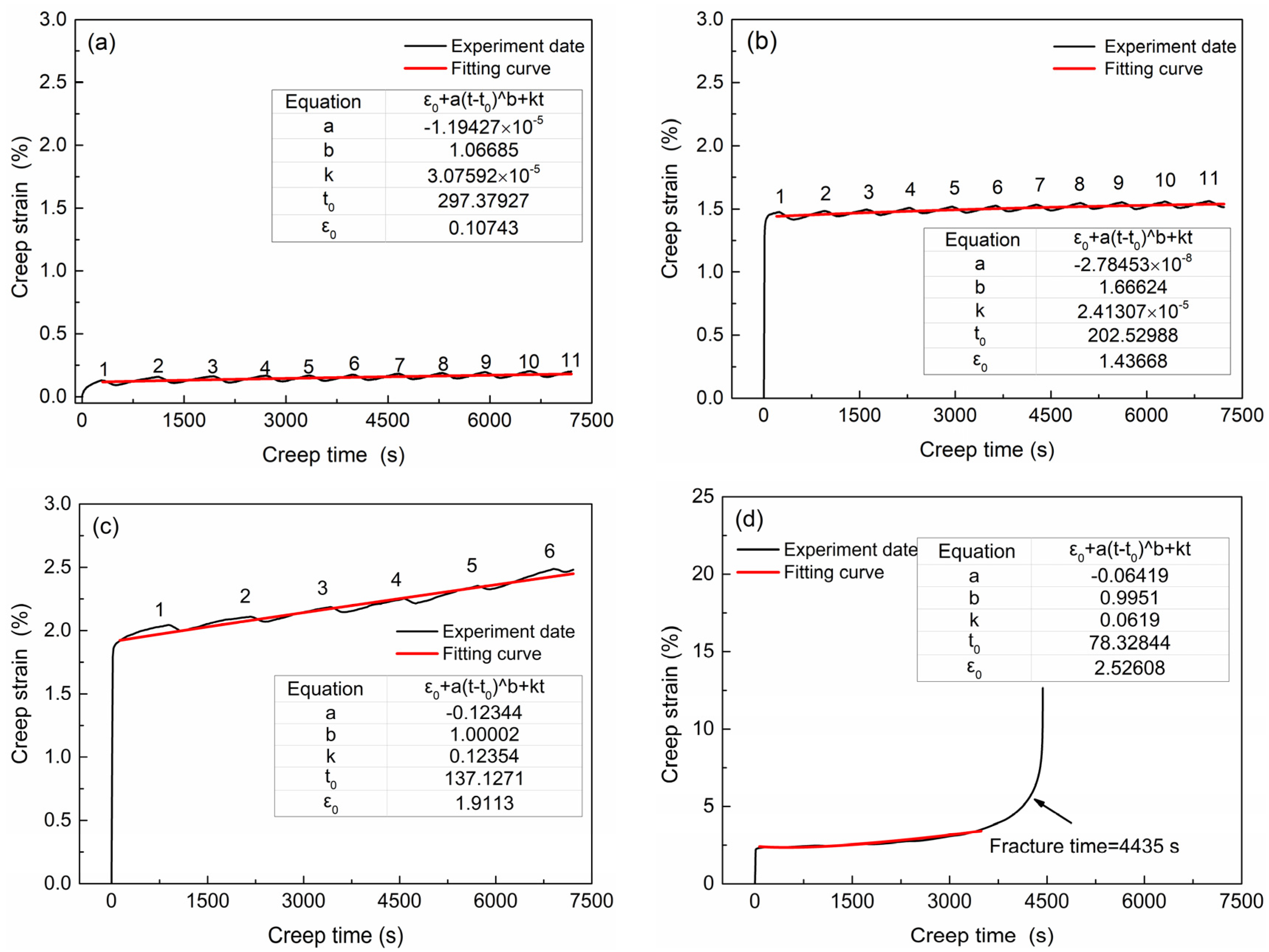
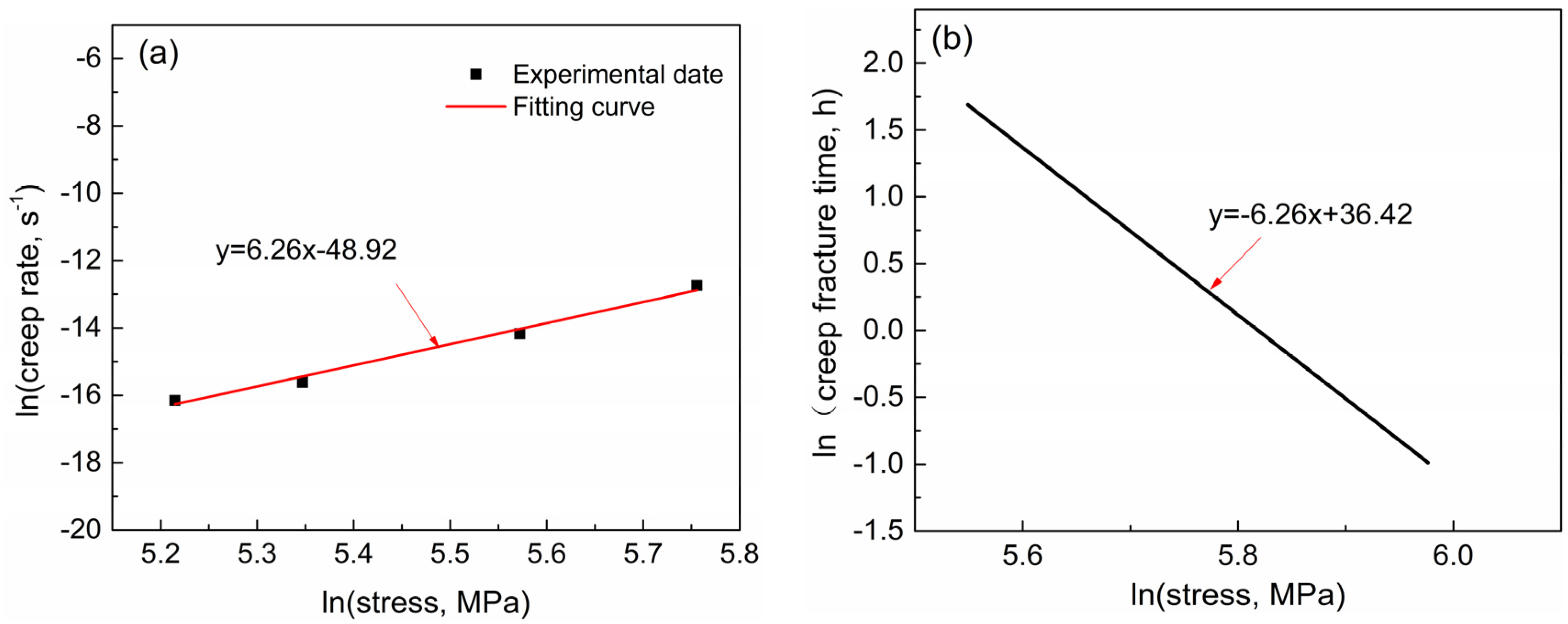
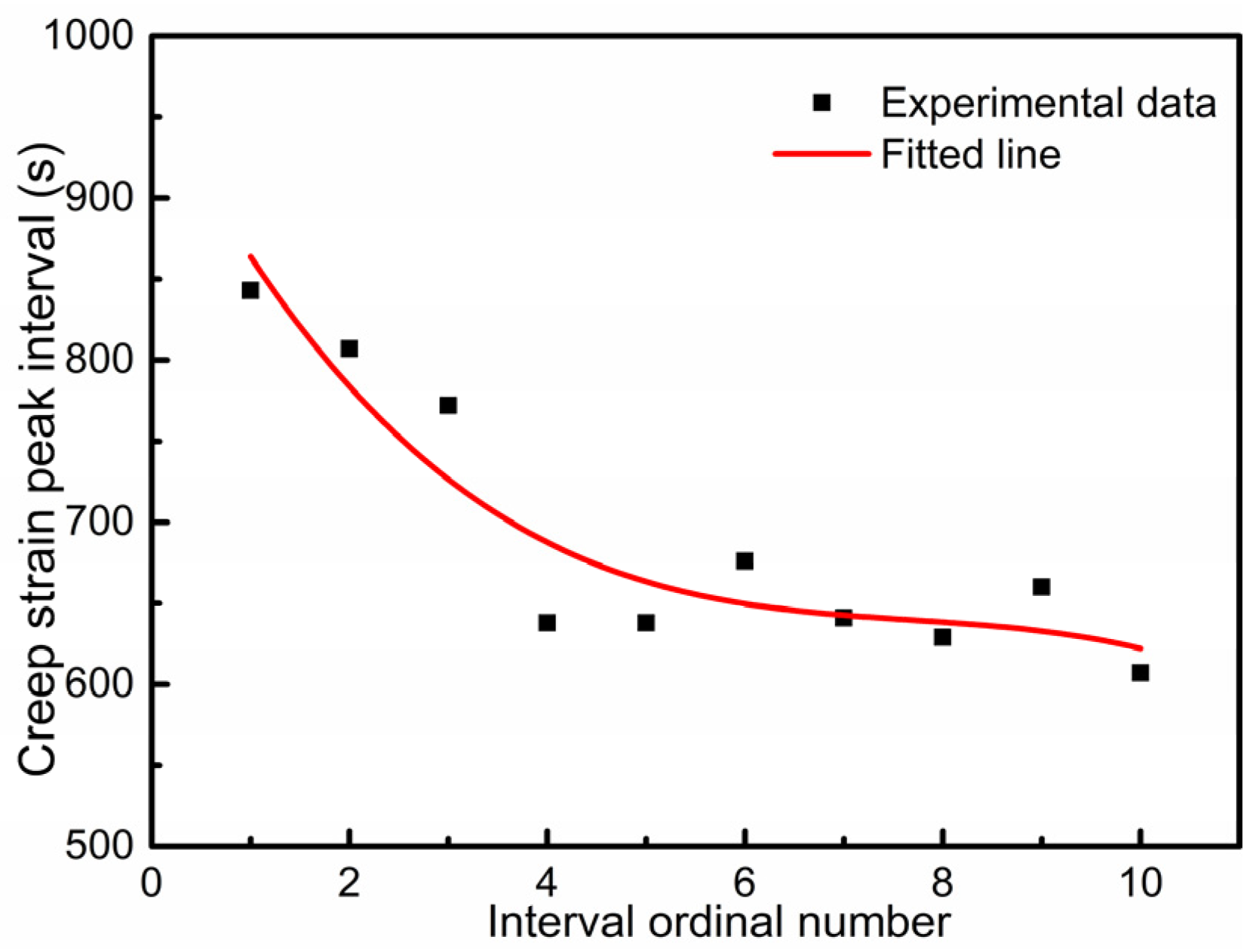

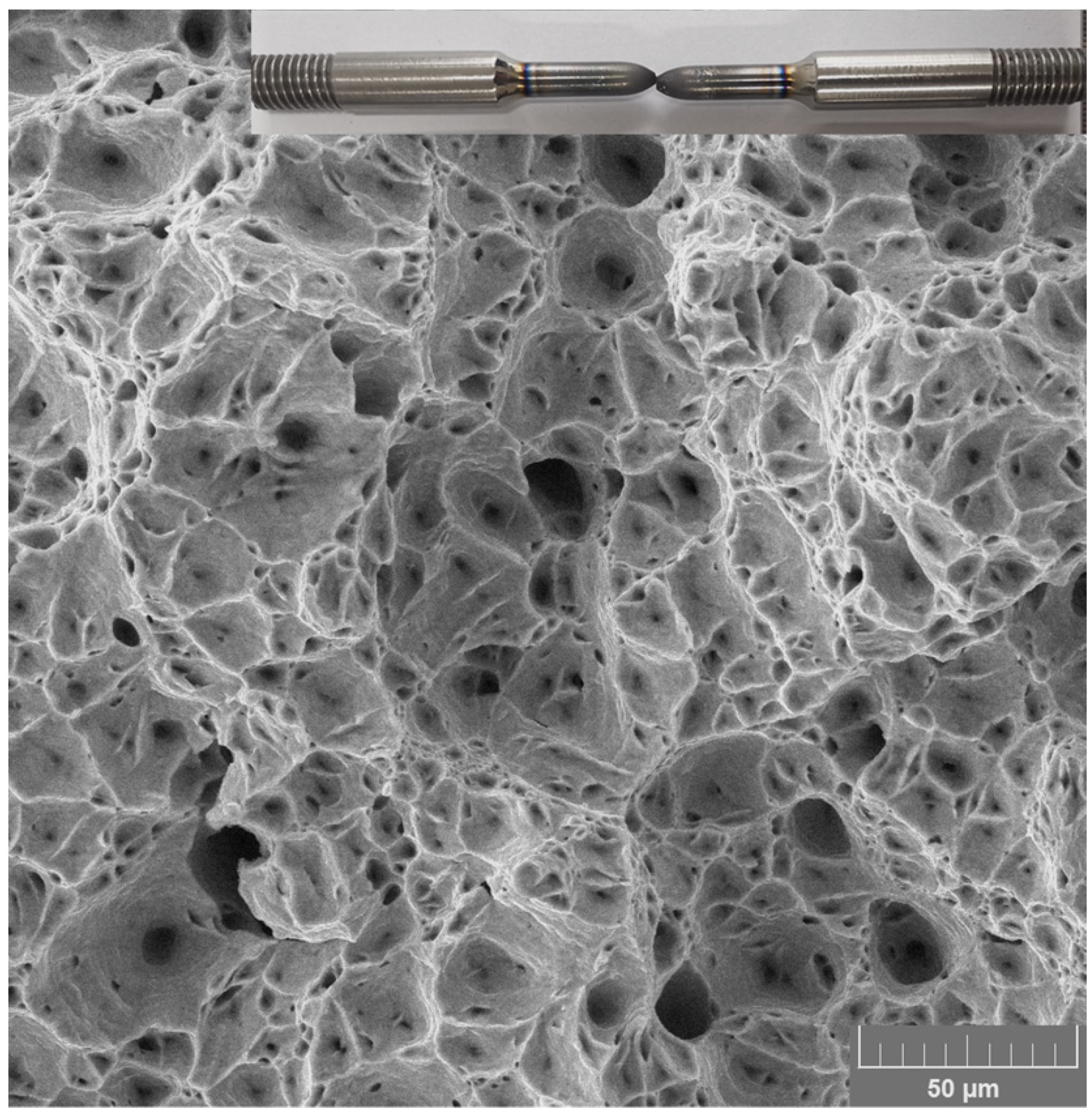

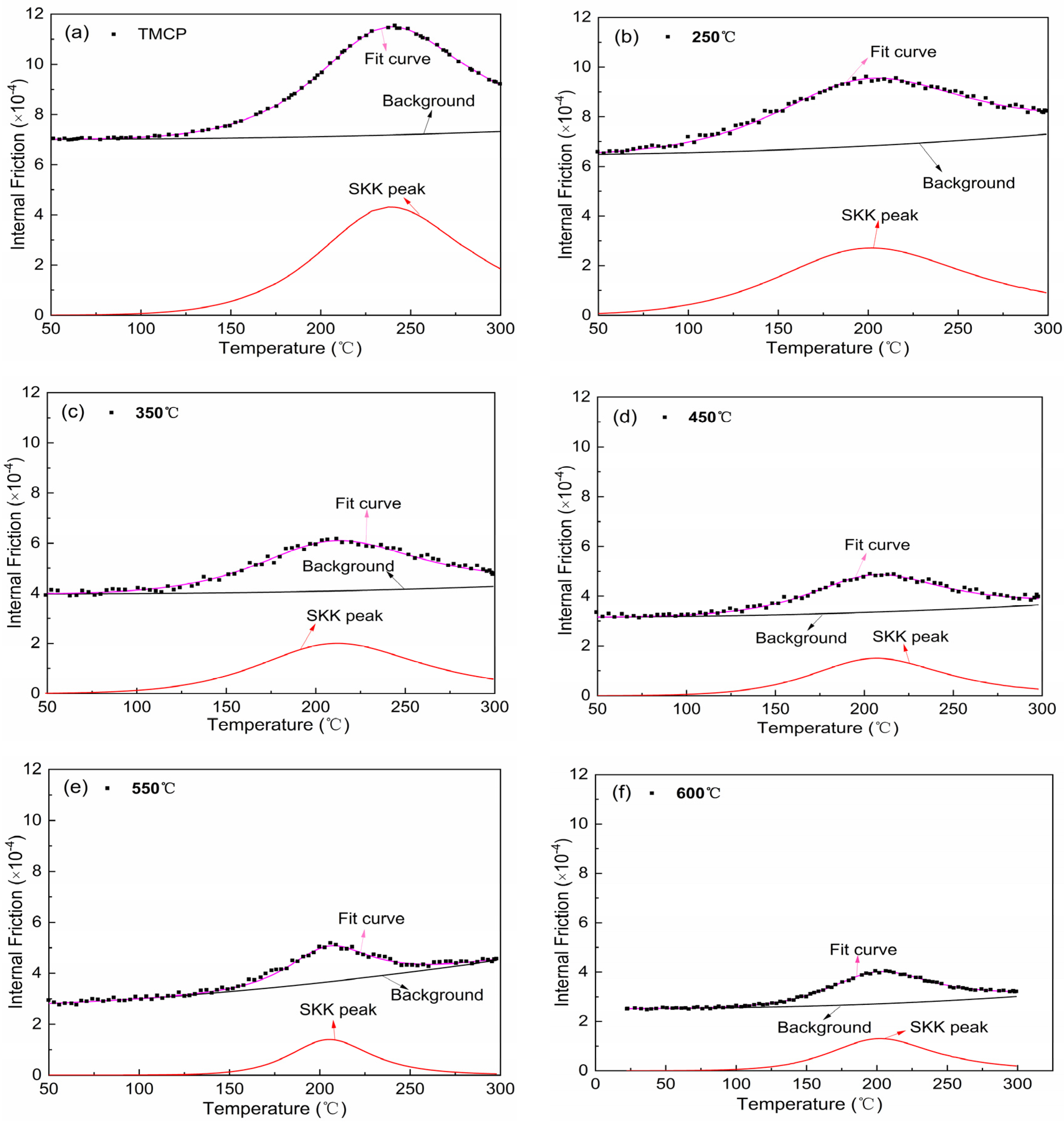


| C | Si | Mn | Cr | Ni | Cu | Mo | Ti | Nb |
| 0.045 | 0.25 | 1.00 | 0.50 | 0.48 | 0.30 | 0.26 | 0.015 | 0.040 |
| Temperature | 25 °C | 250 °C | 350 °C | 450 °C | 550 °C | 600 °C |
|---|---|---|---|---|---|---|
| IF value (×10−4) | 6.86 | 6.46 | 5.97 | 3.15 | 2.72 | 2.52 |
| Yield ratio | 0.75 | 0.76 | 0.79 | 0.84 | 0.83 | 0.87 |
Publisher’s Note: MDPI stays neutral with regard to jurisdictional claims in published maps and institutional affiliations. |
© 2021 by the authors. Licensee MDPI, Basel, Switzerland. This article is an open access article distributed under the terms and conditions of the Creative Commons Attribution (CC BY) license (https://creativecommons.org/licenses/by/4.0/).
Share and Cite
Xu, Z.; Yang, L.; Du, X.; Li, Z.; Yang, Z.; Jia, X.; He, Y. Fire Resistance and Seismic Performance Study of a High-Strength Construction Steel Using Creep and Internal Friction Analysis. Metals 2021, 11, 1045. https://doi.org/10.3390/met11071045
Xu Z, Yang L, Du X, Li Z, Yang Z, Jia X, He Y. Fire Resistance and Seismic Performance Study of a High-Strength Construction Steel Using Creep and Internal Friction Analysis. Metals. 2021; 11(7):1045. https://doi.org/10.3390/met11071045
Chicago/Turabian StyleXu, Zhenlin, Lei Yang, Xiaojie Du, Zhaodong Li, Zhongmin Yang, Xiquan Jia, and Yizhu He. 2021. "Fire Resistance and Seismic Performance Study of a High-Strength Construction Steel Using Creep and Internal Friction Analysis" Metals 11, no. 7: 1045. https://doi.org/10.3390/met11071045






